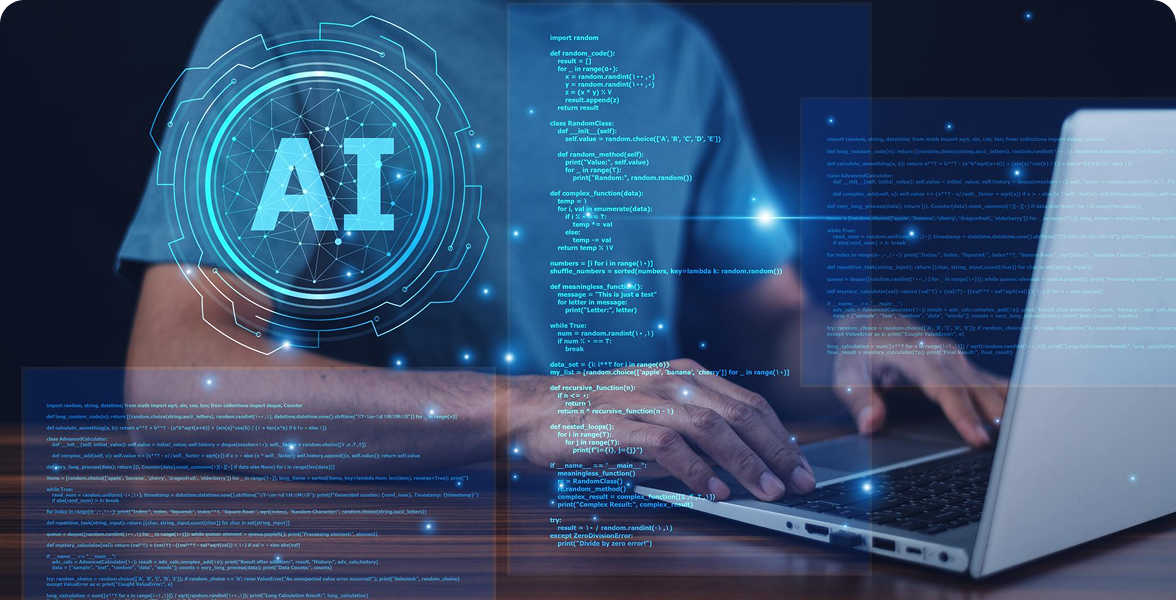Purpose
The Mixture-of-Agents (MoA) approach introduces a new way to boost the performance of Large Language Models (LLMs) by leveraging the collective expertise of multiple models.
Instead of relying on a single LLM to generate a response, MoA uses a combination of models to produce more capable and robust results.
This method improves LLM performance without requiring extensive retraining or scaling, which can be computationally expensive.
Methodologies
The research paper “Mixture-of-Agents Enhances Large Language Model Capabilities” highlights a phenomenon called “collaborativeness,” where LLMs perform better when they can access outputs from other models, even if those models are individually weaker.
The MoA approach constructs a layered architecture where each layer comprises multiple LLM agents, each refining its response using the outputs from the previous layer.
Agent Roles:
- Proposers: Generate diverse initial outputs for a given prompt, offering various perspectives that contribute to better final responses.
- Aggregators: Combine and refine the outputs from Proposers to produce a single, higher-quality response.
The process involves:
- Input: The user’s prompt is the initial input to the system.
- Intermediate Outputs: Each agent generates intermediate outputs, which are passed to the next layer.
- Concatenation: The outputs from all agents in a layer are concatenated before moving to the next layer.
- Final Output: The final layer synthesizes a comprehensive response.
- Token Flow: Each layer processes tokens (words or sub-words) and passes them along, refining the response at each stage.
The way that the final LLM determines output can be used by a special prompt: “Aggregate and Synthesize”.
LLM Selection:
The selection of LLMs for each MoA layer is guided by performance metrics and diversity considerations, ensuring effective collaboration and high-quality results.
Models
The MoA system primarily uses open-source LLMs to promote accessibility and demonstrate the effectiveness of MoA. The default configuration mentioned in the research paper includes:
- Qwen1.5–110B-Chat
- Qwen1.5–72B-Chat
- WizardLM-8x22B
- LLaMA-3–70B-Instruct
- Mixtral-8x22B-v0.1
- dbrx-instruct
Variations of MoA:
- MoA w/ GPT-4o: Incorporates GPT-4o as the final aggregator to prioritize high-quality outputs.
- MoA-Lite: A cost-effective version with two MoA layers and a smaller aggregator (Qwen1.5–72B-Chat), reducing computational expenses.
All open-source model inferences were run through the Together Inference Endpoint, adhering to licensing compliance.
Evaluation
Benchmarks Used:
- AlpacaEval 2.0: Assesses alignment with human preferences by comparing responses against GPT-4’s, using a GPT-4 evaluator.
- MT-Bench: Evaluates overall response quality.
- FLASK: Provides granular analysis of 12 specific LLM capabilities like robustness, correctness, and factuality.
Results:
- MoA consistently ranked at the top across all benchmarks, demonstrating significant improvements over individual state-of-the-art LLMs.
- MoA, built exclusively with open-source LLMs, outperformed GPT-4 Omni on AlpacaEval 2.0 and FLASK, showing an 8.2% improvement over GPT-4o on AlpacaEval 2.0.
- Using only open-source models, MoA saw a 7.6% improvement over GPT-4o, achieving a 65.1% win rate compared to GPT-4o’s 57.5%.
- On MT-Bench, MoA maintained top performance, though improvements were smaller due to high baseline scores.
Collaborativeness Phenomenon:
Figure 1 demonstrates that LLMs perform better when they have access to responses from other models, even if those models are individually weaker. The figure shows two performance bars for each LLM:
- Standalone Performance: The model’s win rate when generating responses independently.
- Collaborative Performance: The model’s win rate when using responses from other models.
This collaboration improves win rates across all models, regardless of their individual strength, highlighting the benefits of collective intelligence.
Advantages of MoA
- Superior Performance: MoA outperforms single LLMs, even state-of-the-art ones, in generating high-quality responses.
- Sophisticated Aggregation: The ability to synthesize the best aspects from multiple responses results in more comprehensive and accurate answers.
- Diversity Benefits: A diverse set of LLMs brings varied strengths and perspectives, enriching final outputs.
- Cost-Effectiveness: Specific MoA configurations can outperform larger single models at a fraction of the computational cost.
- Scalability: MoA’s modular design allows for flexible scaling by incorporating more proposer LLMs or adding layers for refinement.
- Role Specialization: MoA assigns LLMs to roles where they are most effective. For example, GPT-4o excels at both proposing and aggregating, while WizardLM performs best as a proposer.
- Transparency: Intermediate outputs from Proposers offer insights into the reasoning process, helping identify the strengths and weaknesses of individual models.
Disadvantages of MoA
- Increased Complexity: Managing a multi-agent system adds architectural and computational overhead, making it more complex than using a single LLM.
- Debugging Challenges: The interactions between multiple models can make troubleshooting and optimization more difficult.
- Increased Response Time: The iterative process of generating and refining responses can lead to higher latency, which may affect real-time applications.
- Computational Costs: While more cost-effective than large models, MoA still requires significant computational resources to run multiple LLMs simultaneously.
- Time to First Token (TTFT): MoA might take longer to generate the initial part of a response, which could impact user experience.
- Lack of Standardized Tools: The approach is new, and standardized frameworks for MoA system development are still lacking.
Practical Implementation of Mixture of Agents
To further explore how MoA can be applied in practice, I’ve provided a code snippet using the llamaIndex with Ollama models.
This implementation showcases how multiple models (agents) collaborate a more refined and insightful response to user queries.
The following example 1 shows the application of MoA with single proposer “stablelm-zephyr” and an aggregator “llama3”
Query 1: How to reduce anger in Python?
The model provides insightful advice on managing frustration while coding in Python:
Output 1:
- 1. **Error handling**: Use try-except blocks when coding to catch and handle errors. This will prevent your code from crashing unexpectedly, reducing frustration caused by unforeseen issues. For example:
- “`python
- try:
- # Your code here
- except Exception as e:
- # Handle the exception here
- “`
- 2. **Task decomposition**: Break down complex tasks into smaller, more manageable chunks using functions or classes. This will make it easier to track progress and debug any issues, reducing the feeling of being overwhelmed or stuck while coding.
- 3. **Breaks and self-care**: Take breaks when you feel frustrated or angry. Stepping away from your project can help clear your mind, preventing burnout that may exacerbate negative emotions like anger.
- 4. **Stress-reducing techniques**: Practice stress-reducing techniques such as deep breathing, meditation, or physical exercise. Incorporating these practices into your daily routine might help maintain a calm state of mind while working with Python.
- 5. **Support network**: Seek support from friends, family members, or colleagues who are familiar with the language. They can provide valuable insights and encouragement during your coding journey, reducing feelings of frustration or anger by discussing issues you’re facing and receiving advice or reassurance.
- By incorporating these strategies into your workflow, you’ll be better equipped to manage your emotions and maintain a positive, productive attitude while working with Python.
The following example 2 shows the application of MoA with multiple layer of agents consisting of proposer “mistral” and “stablelm-zephyr” and an aggregator “llama3”
Query 2: How to be a good generative AI engineer?
This query leveraged multiple agents to gather diverse perspectives across three rounds:
Output 2:
- 1. **Master the fundamentals of programming and algorithms**: Acquire proficiency in core computer science concepts such as data structures, algorithms, and common programming languages like Python or Java. This foundation is crucial for any AI engineer.
- 2. **Specialize in machine learning (ML) and natural language processing (NLP)**: Familiarize yourself with popular ML libraries like TensorFlow, PyTorch, or scikit-learn. Learn about various ML models, including supervised, unsupervised, reinforcement, deep, and neural networks. In the context of generative AI, understanding NLP is vital for tasks such as sentiment analysis, named entity recognition, text classification, and chatbot development.
- …
- 14. **Stay informed about advancements**: Keep an eye on the latest developments, conferences, and publications in the field of generative AI. Attend webinars, workshops, and conferences to learn from experts and network with other professionals in the industry.
- By following this comprehensive guide, you can develop the skills and knowledge necessary to excel as a generative AI engineer and stay ahead of the curve in this rapidly evolving field.
Conclusion
Mixture of Agents offers a groundbreaking approach to enhancing LLM capabilities through collaboration between multiple models. While it introduces complexity, its benefits in performance, cost-effectiveness, and scalability make it a promising advancement in AI. As research continues, MoA’s potential to redefine how LLMs operate collaboratively will likely unlock new possibilities for AI-driven applications.





